Giochi dell'Oca e di percorso
(by Luigi Ciompi & Adrian Seville)
(by Luigi Ciompi & Adrian Seville)

|
Giochi dell'Oca e di percorso
(by Luigi Ciompi & Adrian Seville) |

|
 |

Torna alla ricerca giochi (back to game search) |
 |
| Geographical Recreation or a Voyage round the Habitable Globe. | ||
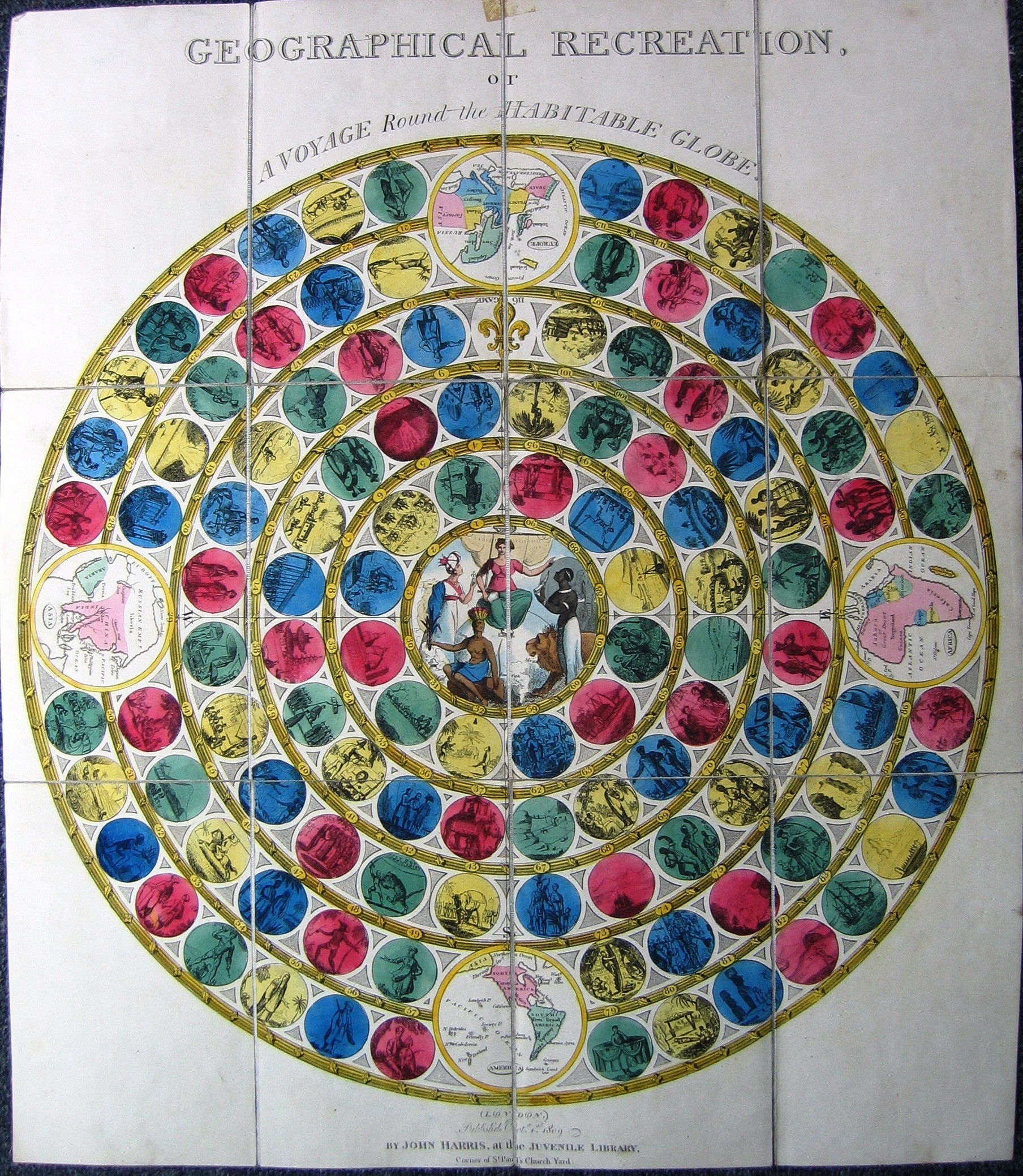 |
Versione stampabile
 |
Invia una segnalazione

|
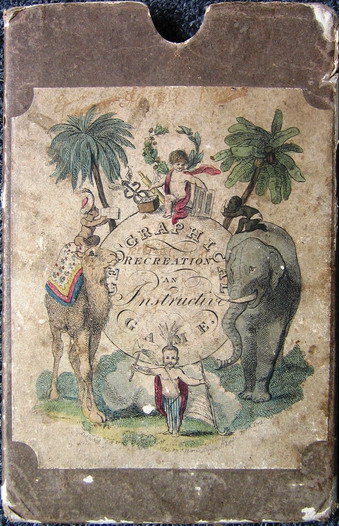 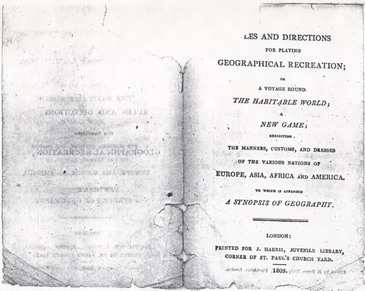 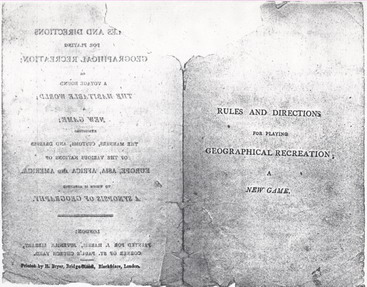 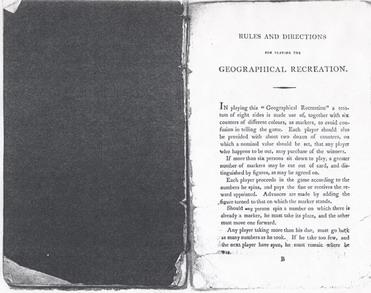 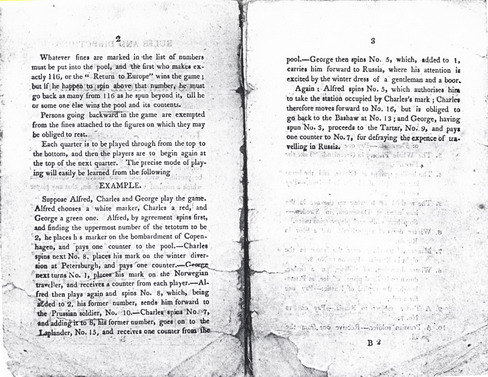 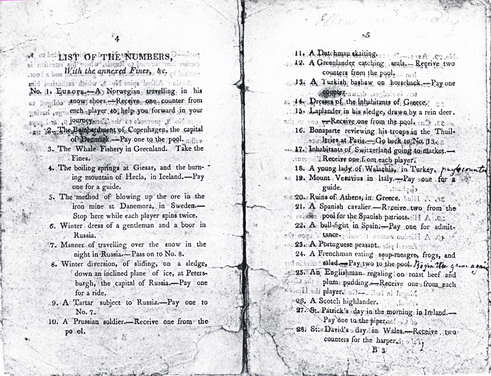 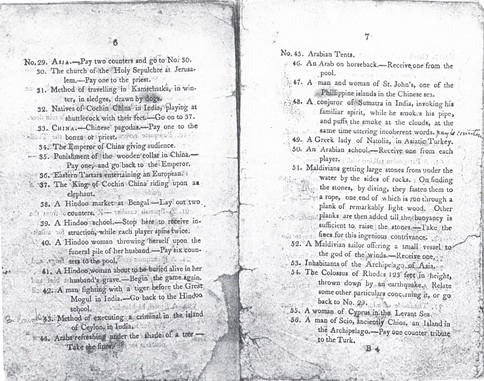 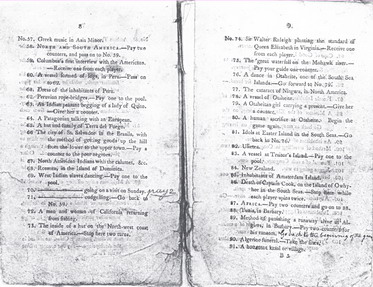 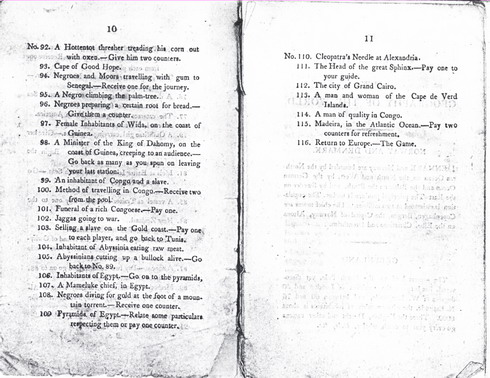 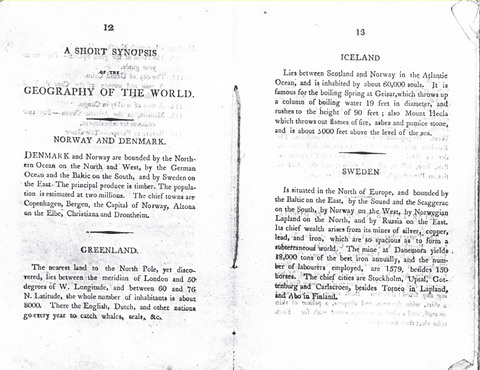 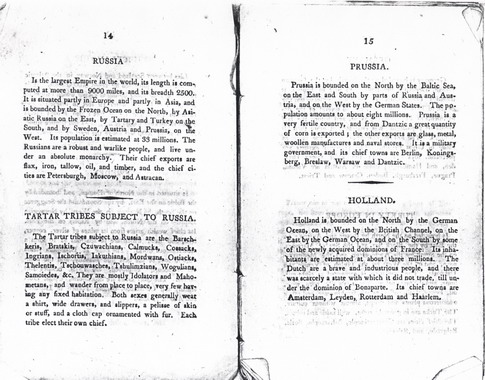 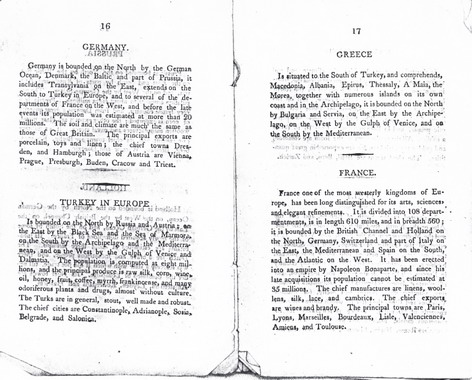 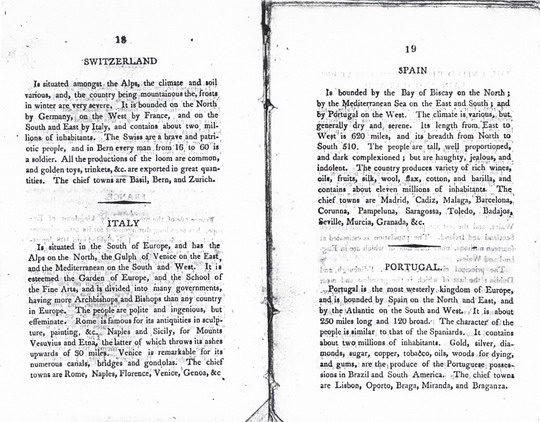 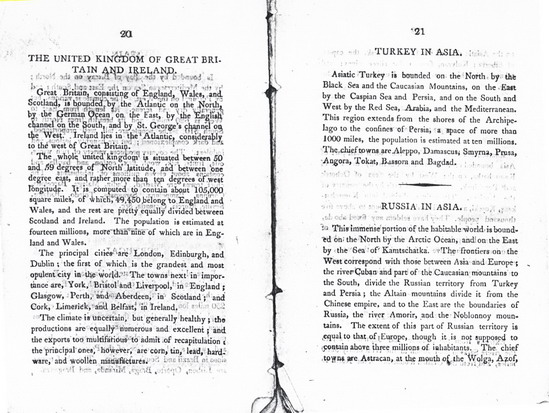 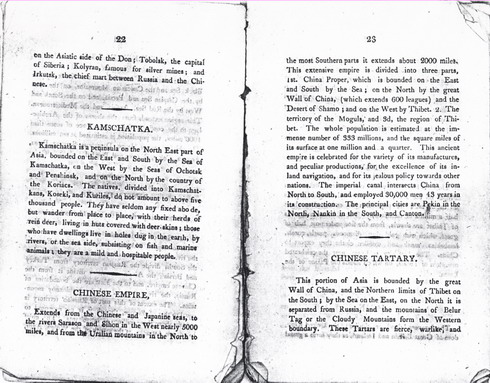 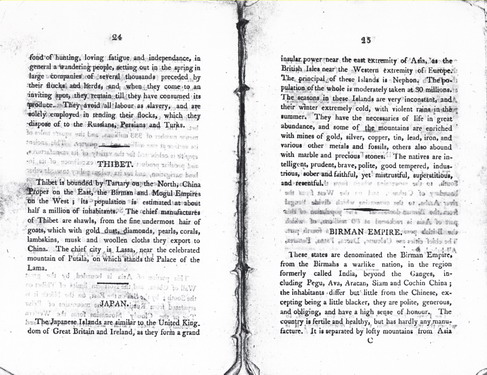 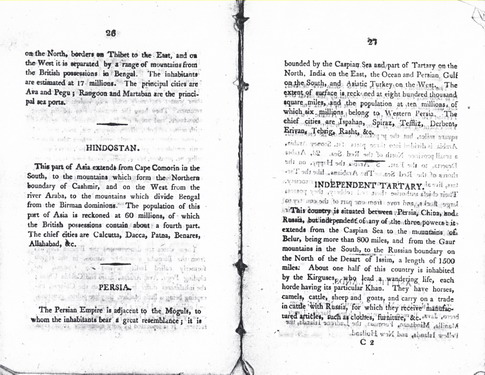 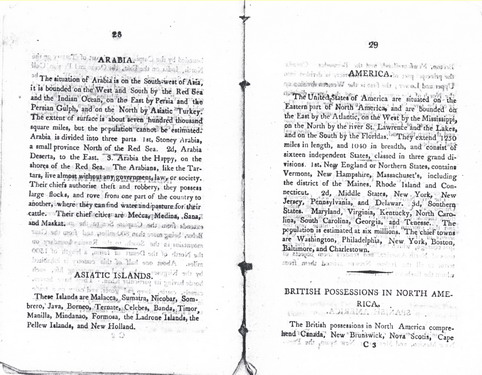 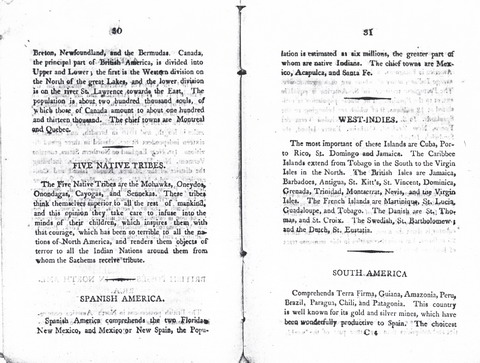 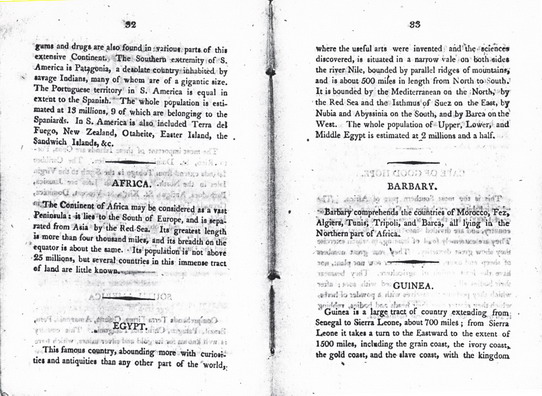 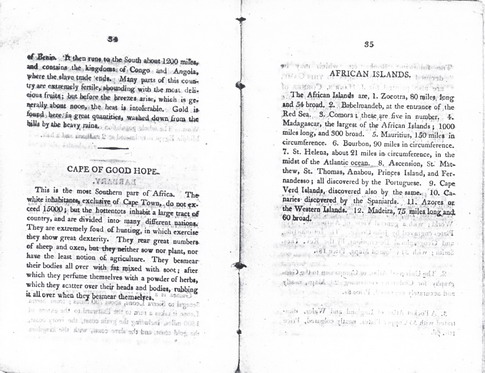 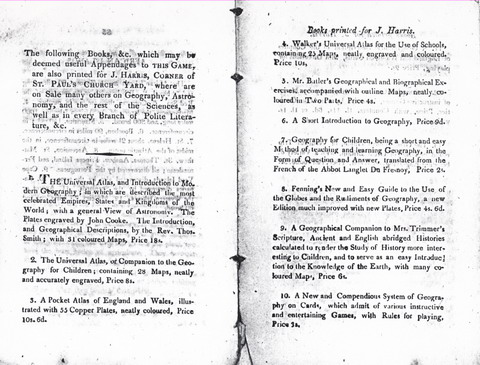  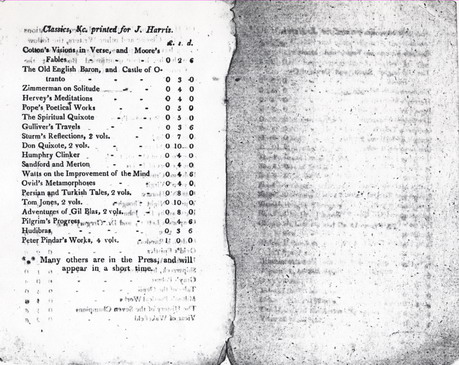 |
primo autore: | Anonimo |
| secondo autore: | Harris John | |
| anno: | 1809 | |
| luogo: |
Inghilterra-Londra |
|
| periodo: | XIX secolo (1°/4) | |
| percorso: | Percorso di 116 caselle numerate | |
| materiale: | carta incollata su tela (engraving on paper with linen backing) | |
| dimensioni: | 000X000 | |
| stampa: | Litografia colorata a mano (hand-coloured engraving) | |
| luogo acquisto: | ||
| data acquisto: | ||
| dimensioni confezione: | ||
| numero caselle: | 116 | |
| categoria: | Geografia | |
| tipo di gioco: | Gioco di percorso | |
| editore: | Harris John at the Juvenile Library Corner of St. Paul's Church Yard | |
| stampatore: | Harris John at the Juvenile Library Corner of St. Paul's Church Yard | |
| proprietario: | Collezione E. C. | |
| autore delle foto: | E. C. | |
| numero di catalogo: | 1335 | |
| descrizione: |
Gioco di 116 caselle numerate composto da 5 cerchi concentrici e diviso in quattro parti con numerazione in ogni quarto che va dal centro alla periferia (1/29; 30/58; 59/87; 88/116; le caselle 29-Asia, 58-America, 87-Africa,116-Europa sono di dimensioni maggiori e contengono una carta geografica). REGOLE: non presenti sul tavoliere. CASELLE: mute. NOTA: vedi esemplare collezione Seville Arch. 2571. REFERENZA 1 "Geographical Recreation or a Voyage round the Habitable Globe." V&A Museum Physical description Design: engraving, coloured by hand, 12 sections mounted on linen showing 116 medallions representing various events and scenes of world history and geography N°of squares: 116 Squares illustrated: all Square numbering: all Squares titled: in booklet Subject of starting square: Norwegian on snow shoes Subject of ending square: Return to Europe Place of Origin: London Date: 01/10/1809 Artist/maker: Harris, John Object history note: The booklet contains Advertisements for other works and books by Harris together with rules , a synopsis of each part of the game. Booklet is 35 pages and only the rules are given here. Historical context note Rewards: receipt of counters, forward movement Forfeits: payment of counters, backward movement, missing turns N°of Players: 2 to six Equipment required: teetotum with 8 sides, markers for each player and 24 counters for each player Rules: RULES AND DIRECTIONS FOR PLAYING GEOGRAPHICAL RECREATIONS A NEW GAME OR A VOYAGE ROUND THE HABITABLE WORLD EXHIBITING THE MANNERS, CUSTOMS AND DRESSES OF THE VARIOUS NATIONS OF EUROPE, ASIA, AFRICA AND AMERICA TO WHICH IS APPENDED A SYNOPSIS OF GEOGRAPHY. LONDON: PRINTED FOR J HARRIS JUVENILE LIBRARY CORNER OF ST. PAUL'S CHURCH YARD 1809. ADVERTISEMENT This game, containing 116 little prints of the most interesting objects in Geography, is designed to familiarise youth with the names and relative situations of places, together with the manners, customs and dresses of the different nations in the habitable globe; and as curiosity will naturally be excited by the scenes which present themselves, and the observations likely to occur, it is presumed that these, with an occasional reference to the Synopsis herewith given, will prove a continual source of amusement to young people of both sexes, and will furnish such a fund of geographical knowledge, as may prove equally beneficial in reading and conversation. RULES AND DIRECTIONS FOR PLAYING THE GEOGRAPHICAL RECREATIONS In playing this Geographical Recreation a teetotum of eight sides is made use of, together with six counters of different colours, as markers; to avoid confusion in telling the game. Each player should also be provided with about two dozen of counters, on which a nominal value should be set, that any player who happens to be out, may purchase of the winners. If more than six persons sit down to play a greater number of markers may be cut out of card, and distinguished by figures, as may be agreed on. Each player proceeds in the game according to the numbers he spins, and pays the fine or receives the reward appointed. Advances are made by adding the figure turned to that on which the marker stands. Should any person spin a number on which there is already a marker, he must take its place, and the other must move one forward. Any player taking more than his due, must go back as many numbers as he took. If he take too few and the next player have spun, he must remain where he was. Whatever fines are marked in the list of numbers must be put into the pool, and the first who makes exactly 116 or the Return to Europe wins the game; but if he happen to spin above that number, he must go back as many from 116 as he spun beyond it, till he or some one else wins the pool and its contents. Persons going backward in the game are exempted from the fines attached to the figures on which they may be obliged to rest. Each quarter is to be played through from the top to the bottom and then the players are to being again at the top of the next quarter. The precise mode of playing will easily be learned for the following. EXAMPLE Suppose Alfred, Charles and George play the game, Alfred chooses a white marker, Charles a red and George a green one. Alfred by agreement spins first, and finding the uppermost number of the teetotum to be 2 he places his marker on the bombardment of Copenhagen and pays one counter to the pool. Charles spins next No. 8, places his mark on the winter diversion at Peterburgh and pays one counter. George next turns No. 1 , places his mark on the Norwegian traveller and receives a counter from each player. Alfred then plays again and spins No. 8 which being added to 2, his former number, sends him forward to the Prussian soldier, No. 10. Charles spins No. 7 and adding it to 8, his former number goes on to the Laplander, No. 15, and receives one counter from the pool. George then spins No. 5, which added to 1, carries him forward to Russia where his attention is excited by the winter dress of a gentleman and a boer. Again, Alfred spins No. 5 which authorises him to take the station occupied by Charles's mark; Charles therefore moves forward to No. 16 but is obliged to go back to Bashaw at No. 13. and George having spun No. 5, proceeds to the Tartar, No. 9 and pays one counter to No. 7 for defraying the expense of travelling in Russia. The booklet goes on to list each of the medallions and the rewards or forfeits The list is followed by a Synopsis which in turn is followed by a list of books, available from Harris and Harris and Walker. Rules placement: booklet printed by H. Bryer Bridge Street Blackfriars. Attribution Note: John Harris at the Juvenile Library Corner of St. Paul's Church-Yard REFERENZA 2 WHITEHOUSE, Francis Reginald Beaman, (pag. 36): GEOGRAPHICAL RECREATION or a Voyage Round the Habitable Globe. Published Oct. 1st, 1809 by John Harris, at the Juvenile Library, Corner of St. Paul's Church Yard. An engraving size 21 in X 23 ½ in, hand-coloured, mounted in 12 sections on linen, contained in slip-in case with picture label on front. The book of rules printed by H. Bryer, Bridge Street, Blackfriars, describes the 116 circular panels comprising the track arranged in 5 concentric circles, with the four larger ones showing Europe, Asia, Africa and America respectively, while a central 4 in circle depicts four figures typical of the four continents,” Many interesting references to the places are given, e.g. : No 16. Napoleon reviewing his Troops at the Tuilleries. No 42. Man fighting a tiger before the Great Mogul in India. No 110. Cleopatra’s Needle at Alexandria. A third edition of this book is dated 1815 and lists 17 games, No 16 being The Swan of Elegance, a new and pleasant game in verse with tetotum and counters, etc. Coloured 9s. No 17. The Study of the Heavens at Midnight during the Winter Solstice. A new astronomical game by Miss Mant, with apparatus for playing, 10s. 6d. N.B. Whilst this game is “geographical”, it is not a map game, and therefore omitted from the list of such games in Chapter II. REFERENZA 3 "Ce jeu, doté de 116 illustrations de plus intéressants objets de la geographie, a pour but de familiariser la jeunesse avec les noms et les situations des lieux, ainsi que les traditions, coutumes et habitude vestimentaires respective des differentes nations du monde connu; et dans la mesure où la curiosité sera excitée par les scènes représentées et le sens de l'observation s'en trouvant aiguisé, il est probable que ce jeu, parallèlement à une recherche occasionelle dans le synopsis joint, sera une source continuelle d'amusement pour les jeunes gens des deux sexes et fournira des bases géographiques qui seront aussi bien profitable à la lecture qu'à la conversation." (GOODFELLOW Caroline) REFERENZA 4 "This game, consisting of 116 little prints of the most interesting object in Geography, is designed to familiarise youth with the names and relative situations of places, together with the manners, customs, and dresses of the different nations in the habitable globe; and as curiosity will naturally be excited by the scenes which present themselves, and the observations likely to occur, it is presumed that these, with an occasional reference to the Synopsis herewith given, will prove a continual source of amusement to young people of both sexes, and will furnish such a fund of geographical knowledge, as may prove equally beneficial in reading and conversation." (GOODFELLOW Caroline) |
|
| bibliografia: |
1) WHITEHAUSE, F.R.B.: "Table Games of Georgian and Victorian Days", London, Peter Garnett, 1951. 2) GOODFELLOW, Caroline: "A Collector's Guide to Games and Puzzles". Secaucus, New Jersey, Chartwell Books-London, Quintet Publishing Limited 1991. 3) GOODFELLOW, Caroline: "The Development of the English Board Game, 1770-1850", in Board Games Studies 1, 1998. 4) GOODFELLOW, Caroline: "Jeux de société. Le guide du collectionneur des jeux de société depuis le XVIIIe siècle jusqu’à nos jours", (Edizione francese) Carrousel MS, 2001. 5) SEVILLE, Adrian: "The Game of Goose: and its influence on cartographical race games" Journal of the International Map Collectors' Society, Winter 2008 N°115 2008. 6) SEVILLE, Adrian: "The geographical Jeux de l'Oie of Europe." In "Belgeo" 2008 3-4 2008. 7) GOODFELLOW, Caroline: "How We Played: Games From Childhood Past", History Press, 2012. 8) QUINN, Brian - CARTWRIGHT, William: "Geographic Board Games". Geospatial Science Research 3. School of Mathematical and Geospatial Science, RMIT University, Australia. December 2014. 9) SEVILLE, Adrian: "The Royal Game of the Goose four hundred years of printed Board Games". Catalogue of an Exhibition at the Grolier Club, February 23 - May 14, 2016. 10) LIMAN, Ellen: "Georgian and Victorian Board Games: The Liman Collection", Pointed Leaf Press, 2017. 11) NORCIA, Megan A.: "Gaming Empire in Children's British Board Games, 1836-1860". Studies in Childhood, 1700 to the Present. Routledge, 2019. 12) SEVILLE, Adrian: "L'arte dei giochi da tavolo. Oltre un secolo di storia e divertimento dalla fine del Settecento all'inizio del Novecento." Edizioni White Star, 2019. 13) PARLAK, Omer Fatih: "Seafearing through the Perspective of Historic Board Games", in DGSM, Köllen Druck+Verlag, Bonn 2020. |
|
| "The Development of the English Board Game, 1770-1850" (Caroline G. Goodfellow) | ||
| Instructional Games. "Table Games of Georgian and Victorian Days". (Francis Reginald Beaman, Whitehause) | ||
Vai alla ricerca giochi Vai all'elenco autori